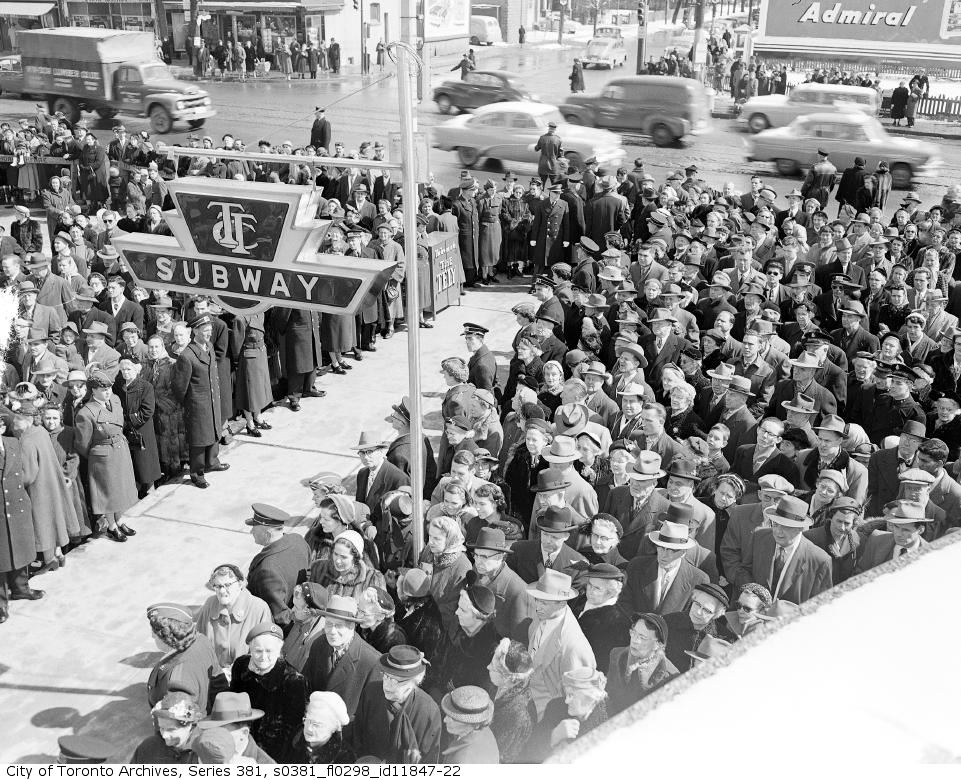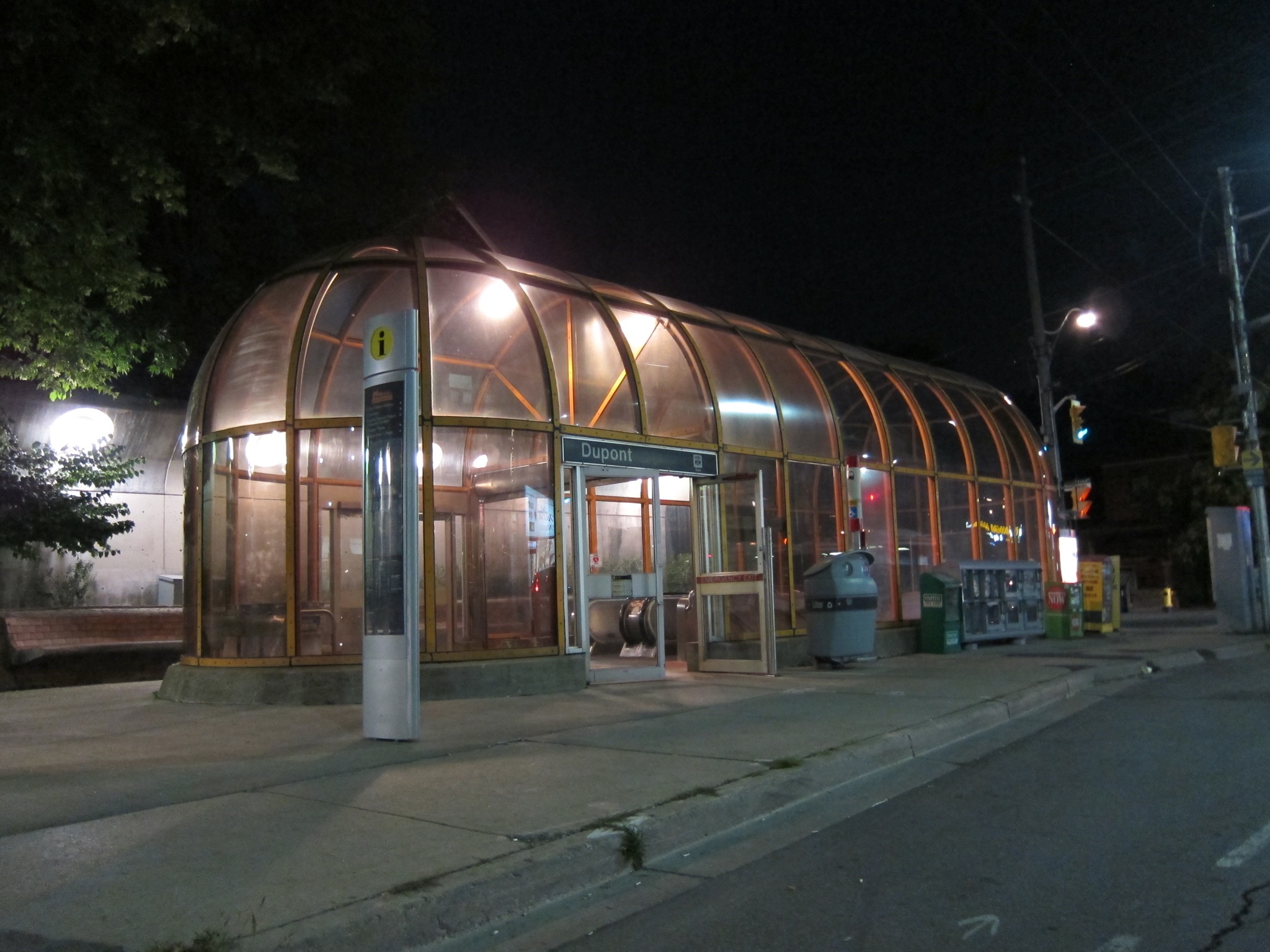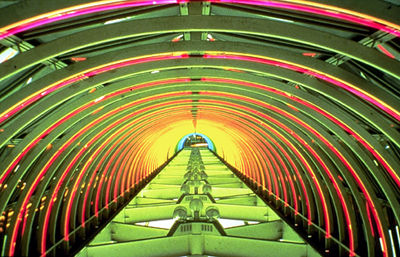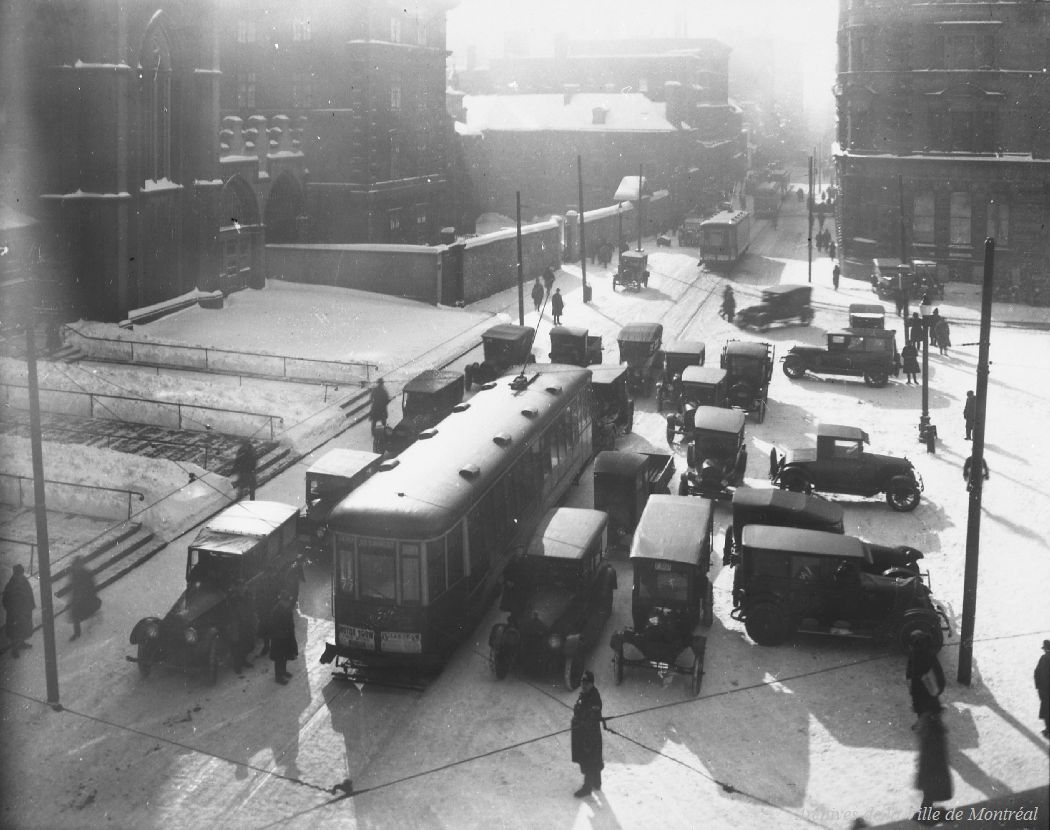The Toronto subway is part of a larger public transportation network, including streetcars, buses and light rapid transit, run by the Toronto Transit Commission (TTC). It opened on 30 March 1954, making it Canada’s first subway. Since then, it has grown from a single, 12-station line running 7.4 km beneath Yonge Street to a three-line system encompassing 70 stations running 70.1 km. In 2024, the TTC recorded 181 million passenger trips on the Toronto subway.
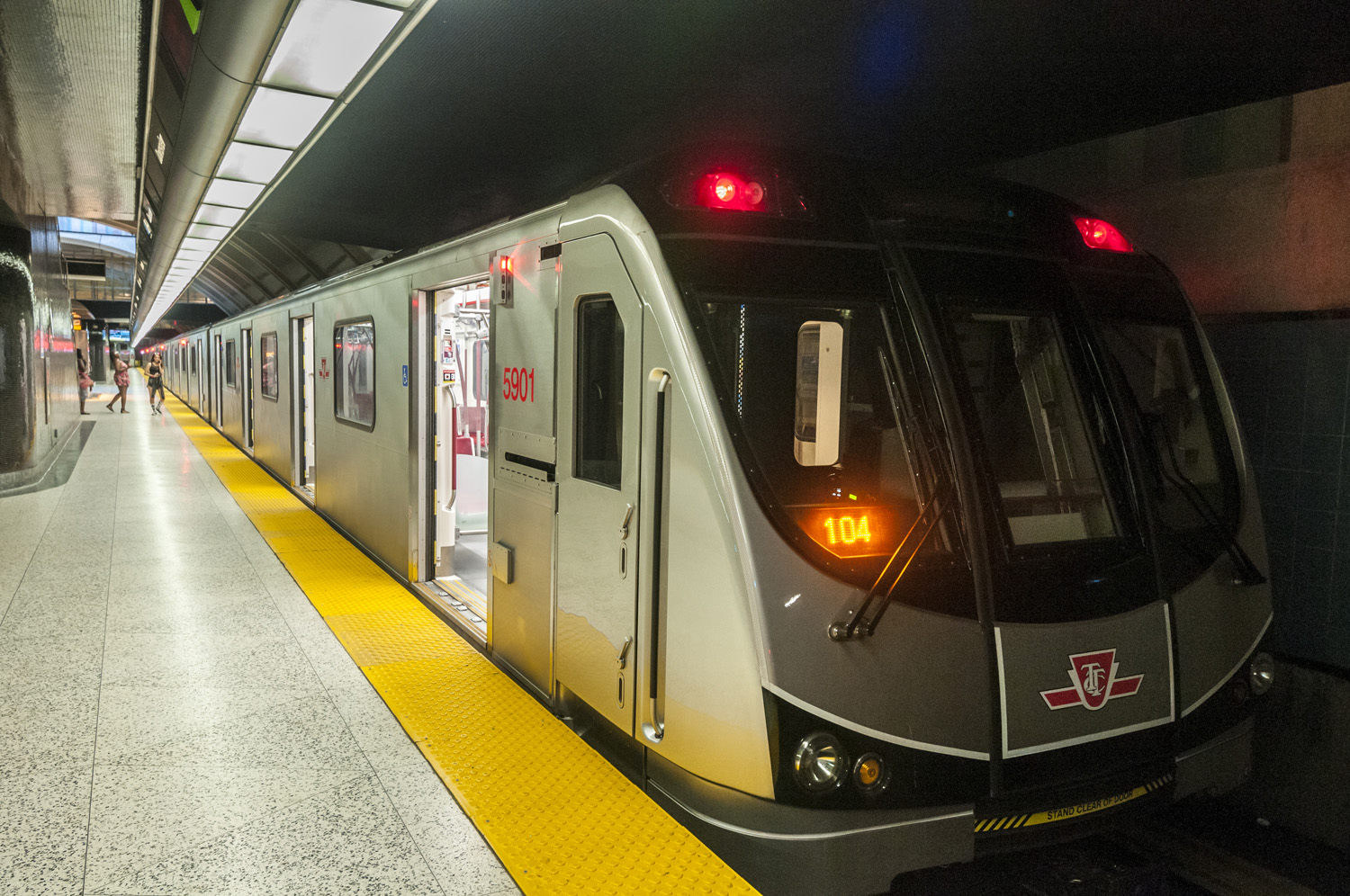
Background
The first decade of the 20th century witnessed a population explosion in Toronto, nearly doubling from 209,892 in 1901 to 381,833 in 1911. The city’s transportation network strained to handle this growth, largely due to difficulties in dealing with the Toronto Railway Company (TRC), a private firm that won a 30-year franchise in 1891 to operate the streetcar system. As the city’s boundaries expanded, the TRC refused to extend its service beyond the areas outlined in its original agreement or add vehicles to its fleet, prompting the creation of municipally owned streetcar lines to serve recently annexed neighbourhoods.
As the TRC’s contract approached its final decade, city officials began discussing methods of working around the company, as well as figuring out services to meet the needs of the increasing population.
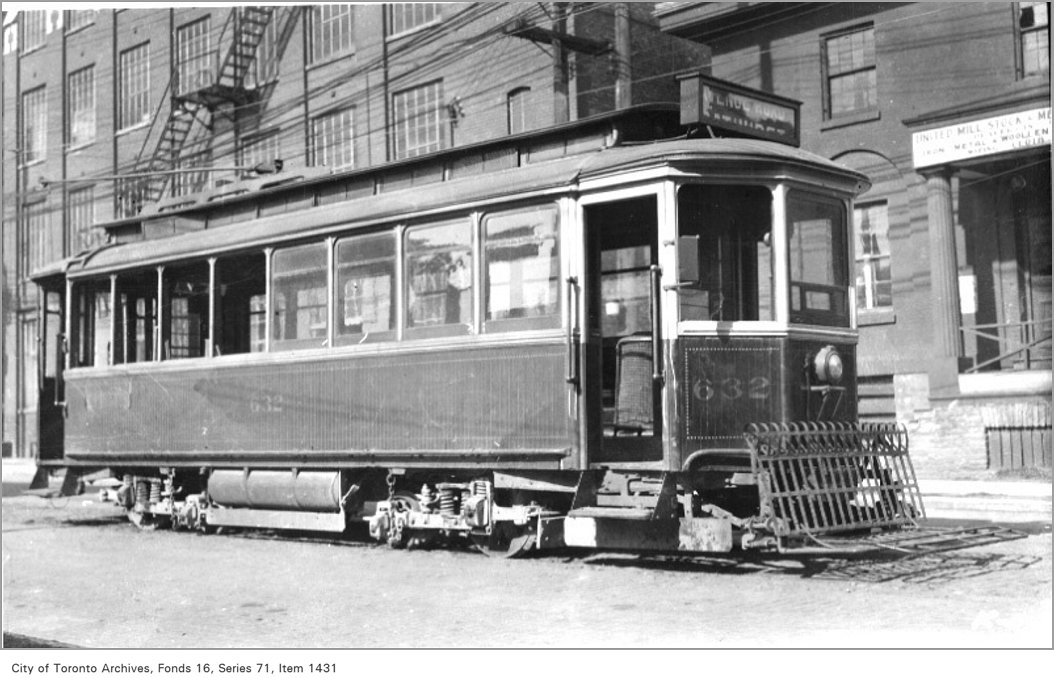
Early Proposals
Early subway discussions in Toronto focused around underground streetcar lines. Following a meeting between Toronto City Engineer C. H. Rust and the England-based Kearney High Speed Railway Company in April 1909, it was reported that Kearney offered to build two lines. For $1 million per mile, one would run north–south under Yonge Street from Front Street to Eglinton Avenue, the other connecting the communities of East Toronto and West Toronto. Discussions stalled when the city indicated that Kearney could not operate any lines privately beyond 1921, when the city’s existing streetcar franchise contract with the Toronto Railway Company expired. From this point forward, the city hoped to publicly operate the transit lines.
City Controller Horatio Hocken took up the subway cause, making a “tube” system along Yonge Street a key plank of his mayoral campaign in late 1909. While Hocken lost the 1 January 1910 municipal vote, a plebiscite (see Referendum) to ask the province for permission to build a municipally owned streetcar and subway system passed by 8,571 votes.
In fall 1911, the City called for tenders to construct a 4.8 km subway running north from Bay and Front Streets to St. Clair Avenue. Approving the expenditure fell to voters, prompting a lively public debate. Hocken argued a subway system would assist suburban workers heading into the city and aid the development of a regional radial railway system hooking into the tubes. Opponents, including four of Toronto’s five daily newspapers, argued that plans were hastily made, population densities were inadequate, real estate exploiters would benefit, and the city’s works department was too overburdened to handle such a project. Voters, worried about the potential tax burden a subway system would create, rejected funding the subway on 1 January 1912 by 2,805 votes.
Further discussion faded amid more pressing concerns with the increasing deterioration of the TRC’s streetcar service. American transit expert Bion J. Arnold observed in 1912 that “subways should be looked upon in the nature of a last resort, a necessity forced by conditions for which there is no other remedy. Toronto does not at present need subways nearly so much as it needs more surface tracks and more and better and faster service cars.” When the publicly owned Toronto Transportation Commission (now called the Toronto Transit Commission, or TTC) took over streetcar service in 1921, its priority was fixing the disintegrating system the TRC left behind.
Birth of the Subway
While proposals for subways and underground streetcar lines arose as make-work plans during the Great Depression, TTC officials didn’t seriously contemplate constructing a system until the Second World War. Sensing that current infrastructure was ill-prepared for postwar Toronto, the Rapid Transit Department was formed by the TTC in January 1944. The plan that emerged called for a subway running from Union Station north along Yonge Street to Eglinton Avenue, and an underground streetcar line along Queen Street from Trinity Bellwoods Park to Logan Avenue.
On 1 January 1946, voters were asked: “Are you in favour of the Toronto Transportation Commission proceeding with the proposed rapid transit system provided the Dominion government assumes one-fifth of the cost and provided that the cost to the ratepayers is limited to such amounts as the City Council may agree are necessary for the replacement and improvement of city services?” The public agreed in a landslide vote.
Despite the ballot question’s wording, no federal funding commitment materialized. The Queen Street line was shelved to focus on the Yonge subway, which carried an estimated project cost of $28.9 million for construction plus $3.5 million for trains. Postwar material shortages delayed work on the project.
Construction of the Yonge Line

“Toronto Goes ‘Big League’ As Subway Project Starts” proclaimed the Toronto Star as construction officially began on the Yonge line on 8 September 1949. Ontario lieutenant-governor Ray Lawson pulled the lever to pound the first pile driver into the ground during a ceremony presided over by future television game show host Monty Hall. Most of the 7.4 km, 12-station line was built using the “cut and cover” technique, which involved building a deep trench which, as construction proceeded, could be covered up by planks. This method was less expensive than tunneling below Yonge Street.
The five-year project drew plenty of onlookers, soon dubbed “sidewalk superintendents” by the TTC, who produced for them several editions of a special manual outlining the entire construction process. TTC Chairman William C. McBrien noted that his agency could not “pay too high a tribute to the forbearance and public spirit which those most affected manifested under these trying circumstances.” Overall, building the subway required 10,000 tonnes of structural steel, 14,000 tonnes of reinforcing steel, 4,200 tonnes of rail steel, 420 tonnes of cast iron pipe, 1.4 million bags of cement, 170,000 tonnes of sand and 240,000 tonnes of gravel. The final cost was estimated at $67 million.
For the new line’s fleet, proposals from North American manufacturers were beyond the TTC’s budget. A bid was accepted in November 1951 from the England-based Gloucester Railway Wagon and Carriage Company. The public received a sneak preview of the trains via a display at the 1953 Canadian National Exhibition. Painted red, trains from the original fleet remained in service until 1990.
Around 5,000 people were at Davisville Station when Canada’s first subway opened on 30 March 1954. Mayor Allan Lamport and Ontario premier Leslie Frost threw the official switch, then joined more than 600 guests on the ceremonial first ride. An estimated 206,000 passengers tried out the new line that day.
Expanding the Subway
With the Yonge line open, debate around east–west line placement resumed. Despite City Hall’s support of a subway line along Queen Street, TTC officials observed higher streetcar traffic volume along Bloor Street and Danforth Avenue, especially among commuters heading downtown from the suburbs. Political bickering increased when Metropolitan Toronto’s vote in favour of building a Bloor-Danforth line was opposed by the western suburbs, particularly small municipalities like Long Branch, Mimico and New Toronto on the grounds of cost and potential delays to other regional public works projects. Some suburban politicians urged Metro Toronto to delay construction until alternative means of transit, such as monorails, were investigated. Stalling tactics by opponents failed, and construction began in November 1959.
Tied into the construction of the Bloor-Danforth line was an extension of the Yonge line along University Avenue. This addition was designed to ease capacity pressure from workers heading into downtown from the east–west route. The six stations of the University line, stretching from St. Andrew (King Street) to St. George, opened on 28 February 1963.
When the initial phase of the Bloor-Danforth line (between Keele Street and Woodbine Avenue) opened to the public on 26 February 1966, the TTC interlined subway service. Every second train along the new line was routed onto the Yonge-University line, providing a direct connection into downtown. This system was plagued by delays and passenger confusion at transfer points. Among the casualties of the end of interlining in September 1966 was Bay Lower Station, which has since served as a movie set and test facility.
Further expansion of the system over the next decade extended existing lines. The most extensive was a northwest lengthening of the Yonge-University line, which opened in January 1978 along the proposed route of the Spadina Expressway.After Kennedy and Kipling stations opened in 1980, further subway construction was halted. Less expensive modes of mass transit, such as light rail transit (LRT) and streetcars were seen as the way forward. The Ontario government prompted the TTC to use itsIntermediate Capacity Transit System (ICTS) vehicles on the Scarborough Rapid Transit (RT) line, a route which, since its opening in 1985, had been plagued by technical problems.
Subsequent revivals of subway construction ran up against financial pressures and government changes. Metro Toronto approved lines along Eglinton Avenue and Sheppard Avenue in 1994, but the former was cancelled by the new Ontario premier, Mike Harris, the following year. The Sheppard line, which opened in November 2002, was saved by the intense lobbying of North York’s mayor, Mel Lastman, who saw it as a development tool. Eglinton Avenue was eventually chosen as the site for the crosstown LRT line currently under construction by the provincial Metrolinx agency.
Design and Architecture

For the original Yonge line stations opened in 1954, Vitrolite pigmented structural glass was used for station tiles. Overall station design was utilitarian, using a solid background colour with contrasting trim. This design remained in use for new stations until the early 1970s.
When the first Spadina extension opened in 1978, commuters enjoyed a diverse range of station designs and materials, from the concrete brutalism of Yorkdale to the mini glass domes at the entrances to Dupont. Artwork was commissioned for each station. One of the most stunning installations was Michael Hayden’s Arc en ciel at Yorkdale, where 158 multicoloured neon lights attached to the roof mimicked the flow of a train entering the station. Maintenance difficulties prompted its removal in the 1990s.
Artwork soon appeared in other stations, often reflecting neighbourhood landmarks. Notable works include Charles Pachter’s Hockey Knights in Canada murals at College Station, honouring the long rivalry between the Toronto Maple Leafs and Montreal Canadiens at Maple Leaf Gardens; John Boyle ’s Our Nell murals at Queen, depicting William Lyon Mackenzie, Nellie McClung, and former department store titans Eaton’s and Simpson’s; and Laurie Swim’s tapestry Breaking Ground at York Mills, commemorating five Italian immigrant workers killed while installing a water main through nearby Hogg’s Hollow in 1960.
Such links to the community were an integral part of the Sheppard Line’s design. More than 300 artists submitted designs whose themes encompassed community, geography and history. The winners ranged from Sheppard-Yonge station’s panoramic Southern Ontario landscape mosaic drawn from 150 photographs to wall tiles at Don Mills depicting fossils and other items found during construction of the line.
Subsequent station revamps have followed in this vein. The most lavish is at Museum, where — thanks to the efforts of the Toronto Community Foundation — the platform was transformed by Toronto-based architectural firm Diamond Schmitt (see Jack Diamond) into a reflection of the collections of the Royal Ontario Museum and Gardiner Museum, including nods to the Egyptian deity Osiris, the Forbidden City, and First Nations architecture.
Current Network
The Toronto subway system consists of 70 stations on three lines, running a total length of 70.1 km. Lines were previously known solely by their geographical locations, but since 2014 have followed a numbering system:
- Line 1: Yonge-University
- Line 2: Bloor-Danforth
- Line 4: Sheppard
In 2023-24, the average weekday ridership was 625,467 customer-trips on Line 1, 403,582 on Line 2 and 38,705 on Line 4.
Construction and Subway Extensions
An 8.6 km, six-station extension of the Yonge-University line via York University into Vaughan, the first to run outside the present City of Toronto boundary, opened on 17 December 2017. The delayed Eglinton Crosstown LRT line, scheduled to open in 2025, has been labelled as Line 5 on the TTC’s future projection maps.
Until 2023, the Toronto subway system include Line 3: Scarborough RT. Following a derailment in July 2023, the TTC introduced interim bus service. Line 3 was decommissioned in November 2023 and the TTC implemented the Line 3 Bus Replacement Plan, a bus corridor that will serve customers between Kennedy and Scarborough Centre stations. Bus service will be in place until the completion of the Line 2 East Extension (Scarborough Subway Extension). Anticipated to open in 2030, the Line 2 East Extension will see Line 2 extended from Kennedy Station to McCowan Road and Sheppard Avenue.
Current Debates
In the early 21st century, Scarborough has proven a flashpoint for subway expansion. Under the “Transit City” plan introduced by Mayor David Miller in 2007, the Scarborough RT was to be replaced with an extended LRT line. Funding delays from the province delayed the start of construction on most of the proposed LRT lines elsewhere in the city, while discontent grew in Scarborough from residents and politicians convinced that anything less than an extension of the Bloor-Danforth subway line was second-class treatment.
Miller’s successor, Rob Ford, capitalized on this discontent in Scarborough and elsewhere in the city, often chanting the mantra “subways, subways, subways.” Upon his election as mayor in 2010, Ford cancelled Miller’s plan, claiming the city no longer needed it (though several of its proposed LRT lines were assumed by Metrolinx). The following years saw a confusing series of council votes and provincial plans for a subway extension into Scarborough, as politicians tinkered with route alignments, number of stations and technologies used. From 2013, Toronto City Council expressed preference for a subway extension.
The ghost of the Queen line approved by voters in 1946 lives on through proposals from Metrolinx and the TTC as the Downtown Relief Line (DRL). It is envisioned to reduce congestion on Line 1, especially at the Bloor-Yonge interchange; that line is expected to become more congested if a proposed extension north to Richmond Hill is realized. A DRL is also seen as a means of serving new, dense neighbourhoods in the southern core stretching from Liberty Village to the West Don Lands. One of the line’s inhibiting factors has been its name, which some residents view symbolically as another example of downtown being prioritized over the suburbs, even though one of its main purposes is to improve commuter flow from outer areas. Another has been financing, as the willingness to invest in the line has been impeded by debates over costs and taxation to raise funds.
Impact
When the Yonge subway opened in 1954, TTC Chairman William C. McBrien noted that “the Commission feels its greatest gratification at the thought that it will transport tens of thousands of workers to and from their homes, speedily and in comfort, freed forever from the inconvenience and delays inherent and inevitable in surface transportation in a crowded city.” It succeeded in easing the overcrowding experienced on the streetcar line it replaced, and would do the same along Bloor Street and Danforth Avenue. Over its first few decades, the system earned praise for its cleanliness and efficiency.
Since the main period of regular subway construction ended in 1980, the system’s lustre has faded. As one of the least publicly subsidized transit systems in North America, the TTC has gone through periods where only bare maintenance was carried out. Political fights have resulted in the construction of lines where accompanying surface development has been slow (e.g., the Sheppard Line), as well as in the perpetual delay of routes experts believe are necessary (e.g., the Downtown Relief Line).

 Share on Facebook
Share on Facebook Share on X
Share on X Share by Email
Share by Email Share on Google Classroom
Share on Google Classroom



